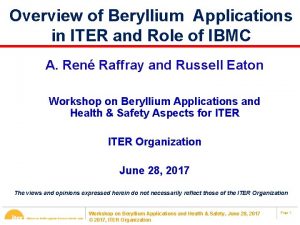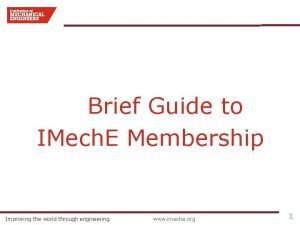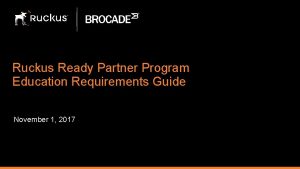Promotion from Assistant Professor to Associate Professor Overview












- Slides: 12

Promotion from Assistant Professor to Associate Professor Overview of the Process and Hints on How to Navigate It – Faculty Perspective Elisabeth Lonergan, Ph. D Professor – Animal Science S

You started your climb to Full Professor the day you started graduate school… You were also hired into your position with the expectation that you could make full professor eving tenure and promotion to Associate Professor is just the n step in your journey to making full professor…. S

The Process… S Putting together your portfolio is about how you tell your story and document your impact in your areas of responsibility S Portfolio development and documentation are critical S Your portfolio will be reviewed by: S Your peers outside the University S Your department S Your college S University S Each of these groups has a different perspective – you must make sure your impact is clear to ALL of them.

Promotion to Associate Professor What is expected? Read the Faculty Handbook…. S Assistant to Associate Professor S Should have a solid academic reputation shows momentum toward further development, productivity and excellence in his/her academic career S Excellence in scholarship that establishes the individual as a significant contributor to the field or profession with potential for national distinction S Effectiveness in all areas of position responsibilities S Satisfactory institutional service S Be involved in your department and university community S candidate has made contributions of appropriate magnitude and quality and has a high likelihood of sustained contributions to the field or profession and to the university S Make sure ALL of this is in line with your Position Responsibility Statement (PRS) S DOCUMENT that you are making an impact and that it is within your PRS

So… what does this mean? ? ? S Since your being hired, you must have shown continued growth in stature and recognition in your primary responsibility area in your PRS S Must also be able to show that growth is sustained and is on a positive trajectory S Need to show the national IMPACT of your work

So… what does this mean? ? ? S Be able to document your achievements and their impact in your primary responsibility area S to your department, your college, the University as well as to your peers outside the university S Make sure they all can relate and see how YOUR program is affecting areas in your PRS

How does one do this? ? S What do you need to have achieved in your primary area of responsibility (Professional Practice, Teaching, Research or Extension) to show national/international recognition? ? S Plan… Check your plan… S Make sure new opportunities that are presented to you will fit within your plan S Take advantage of “check points” in your career to make sure you are on course S 3 year review S S S You will get feedback on how you are meeting your PRS You will get feedback on how well you are communicating your impact Annual reviews

How does one do this? ? S Make sure your PRS is in line with your plan and your current situation S Assess this every year! S Show your work has been building and how it will continue to build S Constantly monitor the impact of your work on your target audience

How does one do this? ? S Communicate your plan S With your department chair S With mentors or respected colleagues both inside and outside the university S Ask for feedback from people in your area of responsibility that you respect and trust

How does one do this? ? S Don’t be afraid to revise your plan S Sometimes path corrections are needed S Discuss these with your department chair, mentors, trusted colleagues S Document your path S If it changed, explain why S Show you adapted S Demonstrate why the course change was made

When it is time to submit your materials for consideration, make SURE you tell your story well S Communication is key when you are putting together your materials S Tell your story S Describe your impact at the national and, if applicable, at the international level S Document your impact S Who is using your work? S How are they using your work? S What has changed in your area of practice/field of study because of what you have done? S Communicate your story in a way that all levels of review can

Bottom line… Document and Communicate S Make a plan that will lead to excellence in your area of scholarship! S Document your plan S Regularly review your plan S S Particularly in light of your PRS Ask for regular feedback on the status of your plan S Document your impact! S Communicate your impact! S Make sure you tell your story honestly and completely
 Promotion from assistant to associate professor
Promotion from assistant to associate professor Cuhk assistant professor salary
Cuhk assistant professor salary Inca civilization
Inca civilization Cincinnati state associate degrees
Cincinnati state associate degrees Iter project associate
Iter project associate Experience assessment
Experience assessment Imeche associate membership
Imeche associate membership Cern hr
Cern hr Associate consultant in capgemini
Associate consultant in capgemini Delta chi associate member pin
Delta chi associate member pin Rcog cpd
Rcog cpd Ruckus accredited partner
Ruckus accredited partner Registered nurse lone star college
Registered nurse lone star college























